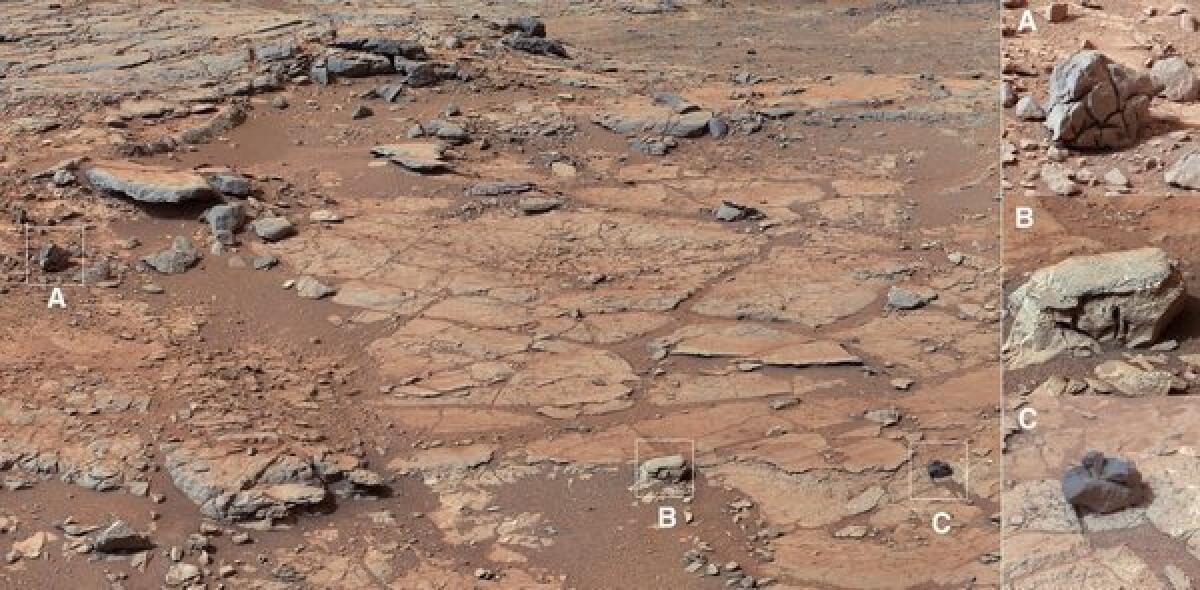NASA Curiosity rover to drill first Mars rock in strange terrain

The Curiosity rover will probably be wielding its drill for the first time on a veined rock on Mars within a couple of weeks, NASA scientists said Tuesday.
Using the drill would be a milestone for the Mars Science Laboratory mission, which has been testing each of the rover’s suite of instruments on Martian rocks since landing on the Red Planet on Aug. 5.
“Drilling is in a sense really the most significant engineering thing that we’ve done since landing,” mission project manager Richard Cook said at a briefing at Jet Propulsion Laboratory in La Canada Flintridge. “It’s really the most difficult aspect of the surface mission, in that we’re going to interact with this unknown Mars surface terrain.”
The unknown terrain in question lies in an area called Yellowknife Bay, a depression so distinct from the rover’s landing site in Gale Crater that “it’s like we entered a whole different world,” said mission lead scientist John Grotzinger.
The team “accepted a little bit of risk in driving to this destination, but this has been really exciting,” he added, calling the area a “jackpot unit.”
There, Curiosity’s MastCam has snapped images of rocks veined with lighter mineral as well as concretions, or small spheres of concentrated minerals. Both of these look like the kind of mineral deposits that would have precipitated out of water, and provide some hints as to what the watery environment would have looked like, Grotzinger said.
“You put that together with the vein fills that look like they’re made out of hydrated calcium sulfate, and basically these rocks were saturated with water,” the Caltech geologist explained.
The rocks at the site were sedimentary rock – which meant they had come from other rocks breaking down and being moved elsewhere and then incorporated into new rocks, said Aileen Yingst, deputy principal investigator for the Mars Hand Lens Imager.
“Mars, at least in this location, was geologically active enough to have created such rocks, which is totally cool,” she said.
The different types of rock that the scientists found were a sign of a complex geological history in the area, MastCam principal investigator Michael Malin said.
“Diversity is always a measure of the number of processes and the different types of materials, and this is a very diverse area,” Malin said. “One of the reasons we’re going slowly is we want to make sure we characterize that diversity.”
The latest of Curioisty’s instruments tried out was the wire-bristled dust removal tool, which scraped away the reddish covering of dust from a rock named Ekwir 1 last week.
As for the drill, the rock the scientists are set to bore in the coming weeks has been named John Klein, after a former deputy project manager for the mission who died in 2011.
Follow me on Twitter @aminawrite.





